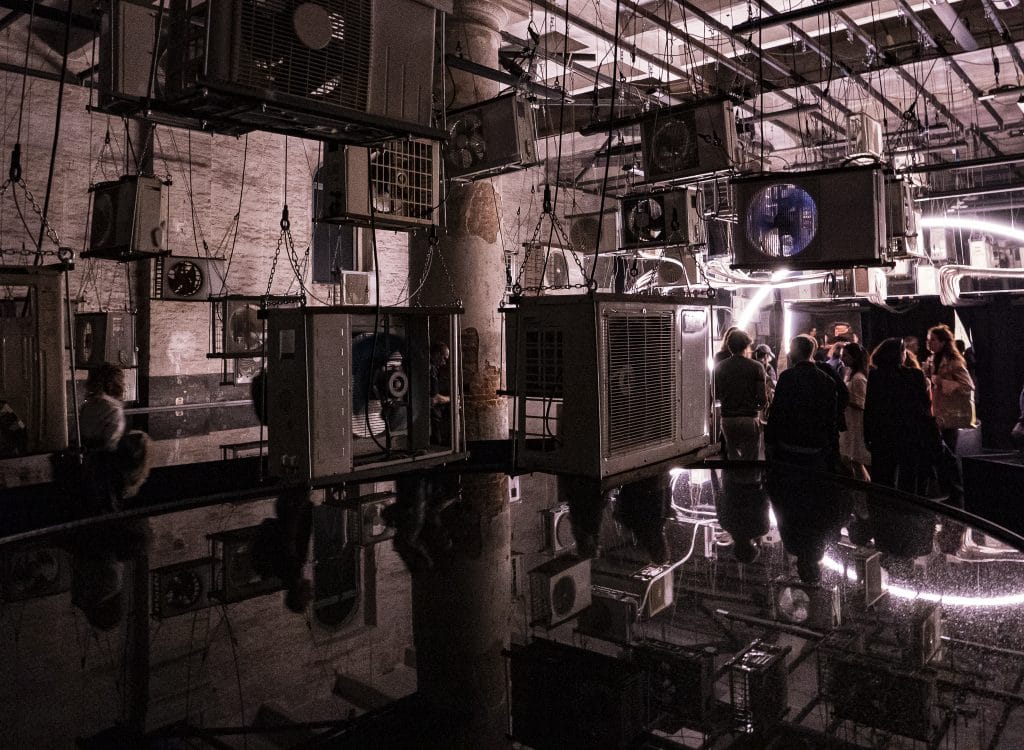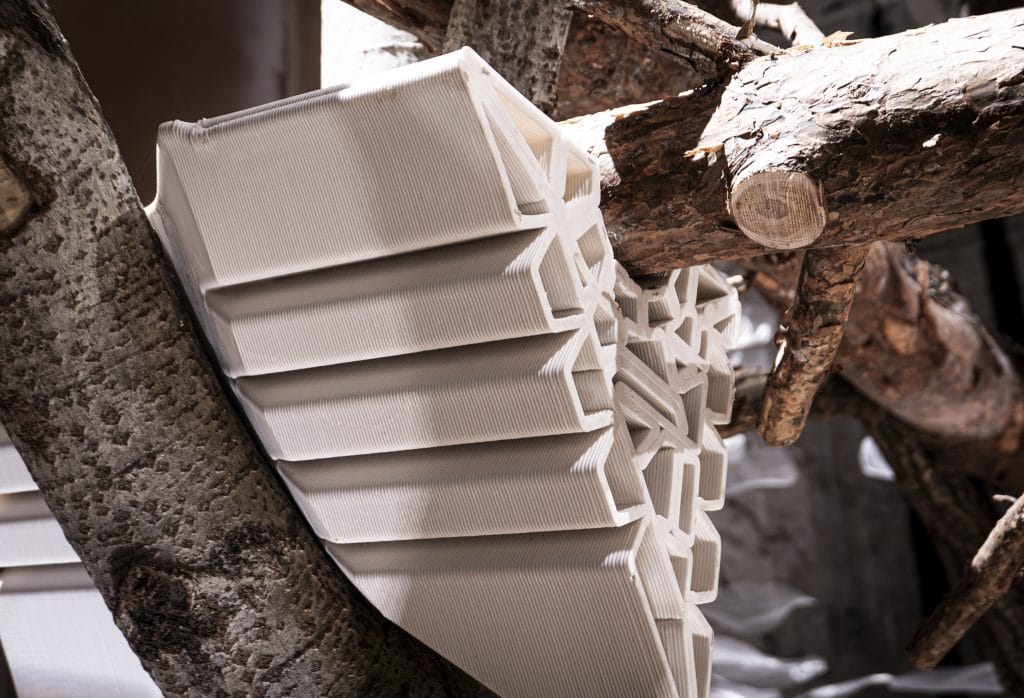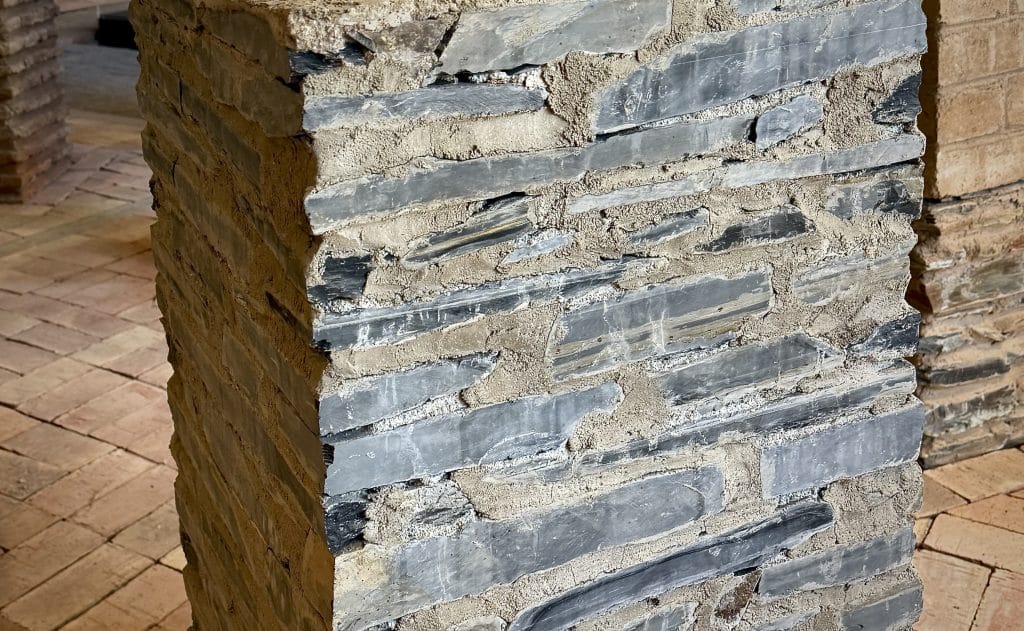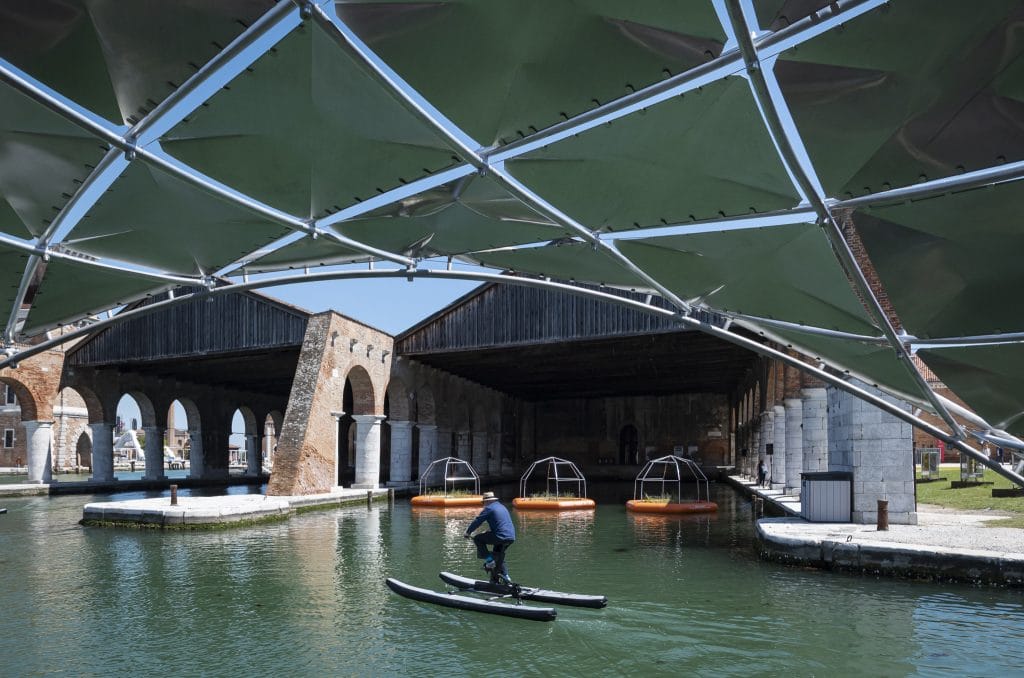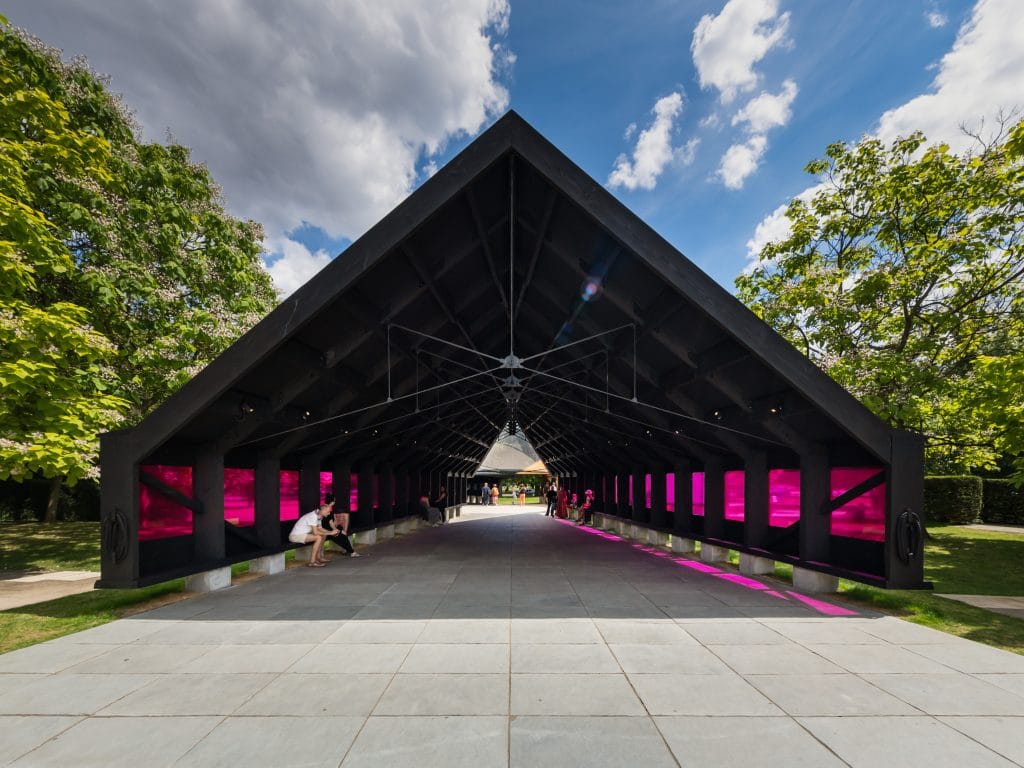Inside the 26 national pavilions of the Giardini, some of the most interesting exhibitions evolve as temporal research during the six months of the Architecture Biennale. The pavilions of Russia and Israel remain closed, as blank reminders of the real geopolitical crisis and destruction. The beautiful Venezuela pavilion also remains closed, due to the country’s difficult political situation.
Carlo Ratti’s overarching curatorial theme is an invitation for exploring the potential of human intelligence and action against the climate crisis. As he points out, architecture has always been the ultimate expression of human invention and engineering, the architecture of Venice being an enduring example of audacious urban design. Although projects expand over various thematics, there is an emphasis on ideas and approaches for a better use of materials and technological inventions for improved and alternative construction systems. These exhibition laboratories are great examples of imaginative approaches, in which the symbiosis of nature and technology forms new kinds of milieus, connections and environments.

At the Belgian Pavilion landscape architect Bas Smets, in collaboration with neuroscientist Stefano Mancuso, has created an indoor exhibition garden with over 200 subtropical plants. Although exotic plants have been in conservatories and winter gardens for centuries, this garden uses contemporary technology for monitoring the plants responses to their environment, for optimising the artificial conditions of this man-made microclimate. Bas Smets is known for prestigious landscaping projects, such as the urban transformation around the restored Notre Dame in Paris. At the Biennale he has introduced a laboratory for better understanding how plants will respond and behave in this monitored space, designed for amplifying the atmospheric effects they produce for improved climatic conditions. It is a calming oasis, offering also a glimpse into the history of indoor gardens and greenhouses. In practice Bas Smet’s project extends the modernist premiss of control and progress underpinned by human intelligence.

The technological dimension of architecture is also a subject of critique at the Biennale. At the pavilion of Nordic Countries, the exhibition titled Industry Muscle, curated by Finnish architect Kaisa Karvinen looks at the oppressive and authoritative effects in architectural design through a series of performances and installations showcased inside the large open-plan pavilion, deconstructing the modernist myth of progress, which is at heart of the design of the pavilion itself, designed by Sverre Fehn. It is an argument against the categorical production of space in modernist architecture, which the exhibition explores as a gendered bodily experience. The rationalism of the modernist organisation of space is presented as harsh and constraining, calling perhaps for an idea of a more diverse, sensorial and fluid public space, although the proposed alternatives remain enigmatic…

One of the most real and direct material presentations of the Biennale must be the project at the Danish Pavilion, curated by Søren Pihlmann, an architect specialising in restoration. The building is undergoing full renovation on a massive scale, and the curatorial project explores the potential of recycling and reusing all the existing materials, which are carefully laid out for the exhibition inside the pavilion. For anyone interested in building materials it is a real delight, even just for witnessing the range of textures and substances extracted from the building site. But more importantly, Pihlmann’s project exemplifies an imaginative approach for the reuse of materials, which will hopefully become an ongoing inspiration for architectural practices everywhere. I saw Danish architect Bjarke Ingels exploring with enthusiasm the techniques Pihlmann has introduced to the project, so hoping future projects by BIG will also be focusing on new ways for recycling existing materials. Pihlmann says the exhibition has forced him to think differently, taking the restoration as a laboratory, open to constant public observation: “For creative people it’s always great when you have narrow boundaries to work with,” he says. As an ongoing testing ground, it opens a window to future approaches and simultaneously an archaeological viewpoint into the context of the Giardini, which is very inspiring.

At the Spanish Pavilion, a similar theme around the use of materials is presented in a more traditional exhibition format with a wider scope, curated by Spanish architects Roe Salgueiro Barrio and Manuel Bouzas, titled Internalities. While the Danish exhibition played with the rough reality of material presence, the Spanish curatorial team brings forth the potential of beauty of naturally produced local resources and recycled materials in compelling displays. The central hall presents sixteen current architectural projects from different regions of Spain, selected from an open call. Designed around a curatorial idea to emphasise the balancing act in the use and production of materials, the exhibition evokes the sensorial quality combined with the ecological ambition to stick with locally sourced materials. The qualities of various types of stones as well as earth used in the production of traditional construction materials is brought out and juxtaposed with new approaches, such as ‘urban mining’. Showcasing these characteristics and methods to be understood and appreciated instead of extracting new materials, the curators call for legal incentives to support and advocate more creative approaches and a renaissance in material culture.

As a showcase for ecological material production, the project at the Canadian Pavilion feels much more abstract, like a futuristic science fiction laboratory. The exhibition titled Picoplanktonics looks at a biological process, which is shown to absorb carbon dioxide from the atmosphere, based on the special feature discovered in marine cyanobacteria Picoplankton. It is an organic substance, now growing on robotically manufactured structures during the exhibition. In this environmental experiment for improved atmospheric oxygen levels, living organisms are simultaneously strengthening the structures on which they grow. The atmosphere inside the pavilion does indeed feel unusual, as if dense with oxygen. This fascinating biological process, in which digital technologies are part of the organic fabrication, is the invention of a research team at ETH Zurich, led by designer and architect Andrea Shin Ling.

Another kind of immersive material experience can be found at the Serbian Pavilion, curated by architect Slobodan Jovic. Recalling late 1960s conceptual artworks, which sought to replace harsh industrial materials with more fluid and organic forms, this project titled Unraveling: New Spaces is designed as a kinetic artwork with digital programming. As the cloud-like hanging structure knitted of wool is being unravelled, it will continue altering and diminishing its form during the six-month period of the Biennale. Relying on an algorithmic design, this process will bring the yarn back to its original state. Happening in time and space, this project evokes Ratti’s theme in multiple ways, bringing together craft and technology, ultimately as a digital process that will undo the physical part of the exhibition, leaving the pavilion empty.
Marianna Wahlsten


